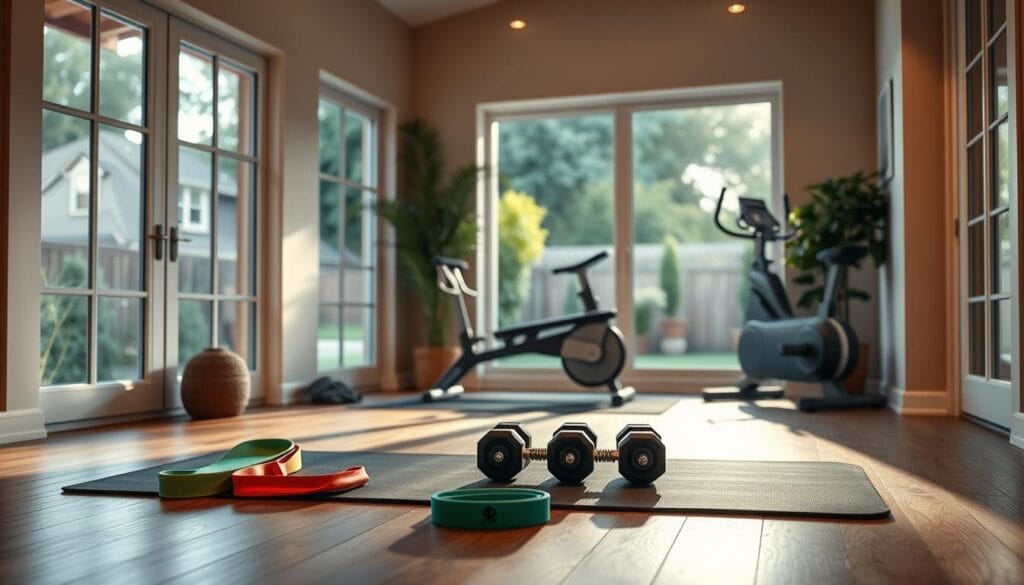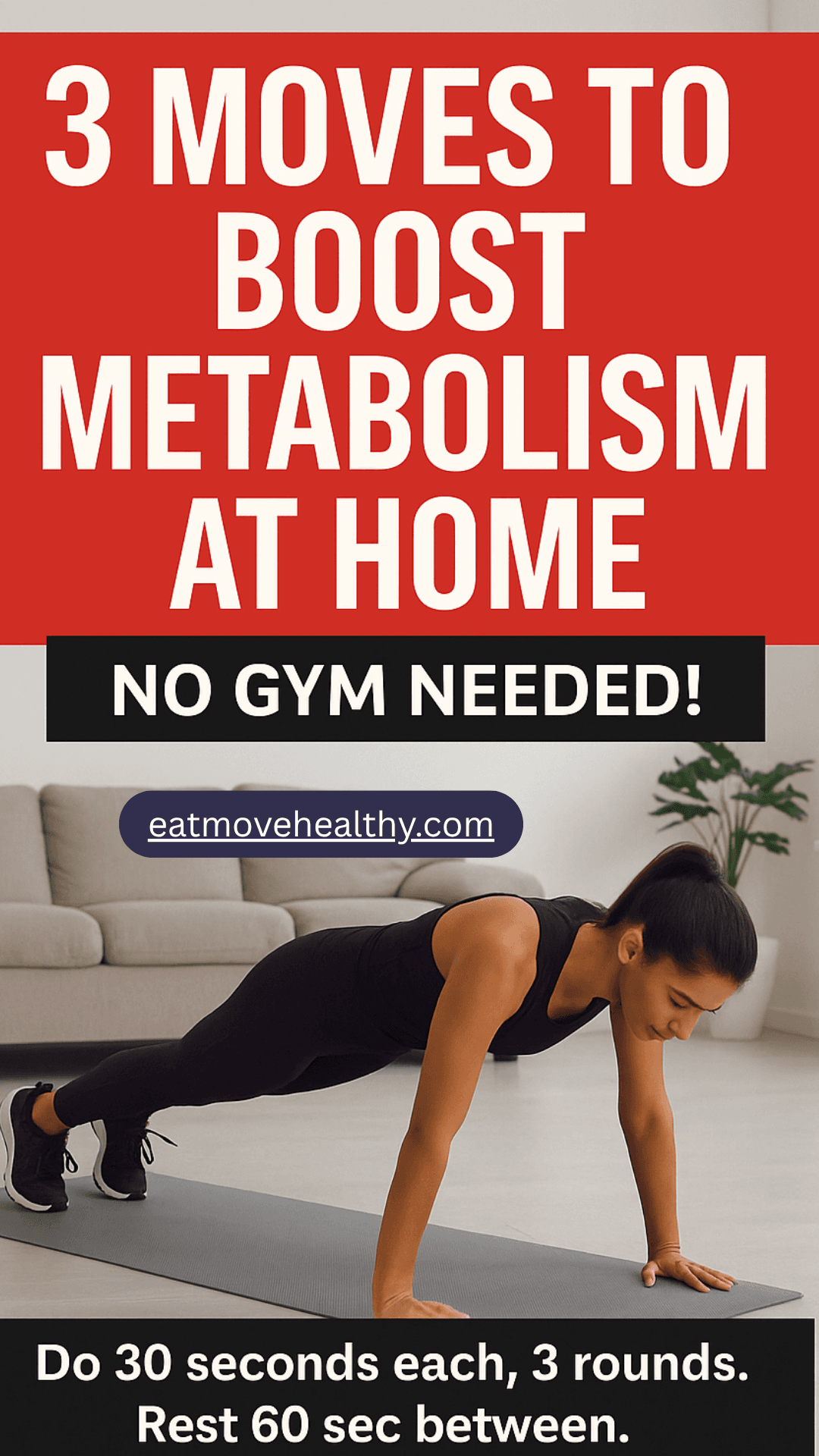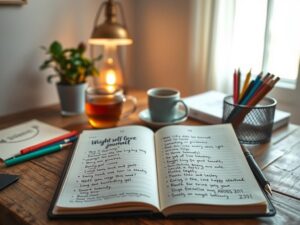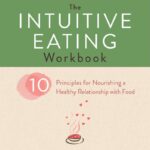Best Tips to Stop Stress Eating In today's fast-paced world, stress has become an inevitable…
As an Amazon Associate I earn from qualifying purchases.
20 Tips to Stop Being Lazy and Exercise

Better Health
I used to be the queen of making excuses for not exercising. My running shoes were collecting dust while I mastered the art of sitting on the couch. Does this sound like you? For years, I battled with finding the motivation to exercise until I found a way to make it a regular habit.
We all know we should move more. We see the benefits, but something holds us back. I’ve been there, fighting the urge to exercise versus binge-watching TV.
What changed for me wasn’t a magical workout or fancy gear. It was understanding my resistance to exercise and finding simple ways to overcome it. These 20 tips come from my journey from a sedentary person to someone who exercises regularly.
If you’ve struggled to stick with exercise, don’t be hard on yourself. Exercise motivation isn’t just about willpower. It’s about creating systems that fit your life. Let’s look at practical ways to change how you view physical activity and beat exercise laziness.
.
Key Takeaways
- Exercise resistance is normal and understanding your personal barriers is the first step to overcoming them
- Finding your meaningful “why” creates stronger exercise motivation than focusing on looks alone
- Small, consistent movement beats perfect but rare workouts for long-term health
- Creating an environment that makes exercise easier dramatically increases success rates
- Connecting physical activity to activities you genuinely enjoy transforms exercise from chore to pleasure
- Technology and community support can provide accountability when motivation wavers
- Setbacks are part of the journey—having a bounce-back plan is essential
Understanding Why We Avoid Exercise
Ever hit snooze after setting an alarm for a workout? You’re not alone. Almost everyone procrastinates exercise, even knowing it’s good for us..
The Psychology Behind Exercise Procrastination
Our brains love immediate rewards, like scrolling social media instead of working out. Perfectionism also plays a big role – if we can’t do it perfectly, why try? Fear of being judged at the gym is another big obstacle.
Common Barriers to Regular Physical Activity
There are many reasons we don’t exercise regularly:
- Time constraints between work and family
- Lack of accessible facilities or equipment
- Physical discomfort or past negative experiences
- Energy depletion after long workdays
- Lack of social support or workout partners
How I Identified My Own Exercise Resistance
I started by being honest with myself. I wasn’t too busy – I just preferred Netflix over exercise. I set unrealistic fitness goals that led to failure.
The key moment was realizing I believed I wasn’t athletic. This belief came from childhood gym class. By facing these truths, I could start finding solutions that fit my life and mindset.
.
The Real Impact of Sedentary Lifestyle on Your Health
Every day, I’d sit at my desk for hours. I noticed changes in my body that weren’t normal. My lower back was stiff, I felt tired all the time, and my mood was unpredictable. These were signs that my body was reacting to too much sitting.
Studies show that sedentary lifestyle health risks are more than just gaining weight. They affect our health in many ways.
Looking into the science, I was amazed. Sitting for long periods harms our blood flow, muscle activity, and metabolism. Our bodies slow down, which is bad for us today but good for our ancestors when food was scarce.
This slowdown can lead to insulin resistance and high cholesterol. These are risk factors for heart disease.
Physical inactivity is responsible for 1 in 10 premature deaths worldwide and increases risk factors for heart disease by up to 147%, according to the World Health Organization.
What really hit me was how fast these changes happen. Just two weeks of less activity can hurt our muscle and fitness. But the good news is that exercise can help quickly too.
Within days of being more active, I slept better and had more energy. My mind was clearer, and the aches went away.
This knowledge changed how I saw exercise. It became a must for my well-being, not just a task. My body was made to move, not sit still for hours. This understanding helped me find the motivation to make healthier choices.
Finding Your "Why": Creating Meaningful Motivation
Exercise motivation is more than just a goal. It’s about linking physical activity to what truly matters in your life. I learned this the hard way, trying many times to start and stop workout routines.
Connecting Exercise to Your Core Values
Connecting exercise to your core values is powerful. For me, valuing independence changed everything. Exercise became about staying mobile and self-sufficient, not just looking good.
Think about what you truly care about. Is it family, adventure, or creativity? Find ways your fitness supports these values. This connection keeps you motivated even on tough days.
Setting Health Goals That Actually Matter to You
Focus on how exercise makes you feel, not just how you look. I now track energy, sleep, and stress reduction. This shift in focus has made a big difference.
Set personal fitness goals that reflect your life. Want to play with your kids without getting tired? Or hike that mountain next summer? These goals keep you moving towards real experiences
My Personal Journey to Finding Motivation
I used to exercise only to look different. But the motivation always faded. It wasn’t until I noticed the mental clarity and reduced anxiety from working out that I found real reasons to keep going.
Your journey to finding motivation is unique. Listen to what truly gets you moving. Those genuine reasons will keep you on your fitness path for the long haul.
Stop Being Lazy and Exercise: 20 Tips That Actually Work
Breaking free from exercise avoidance isn’t just about willpower. Over the years, I’ve gathered 20 effective strategies. These tips have helped me overcome laziness and exercise regularly.
Mindset Shifts That Combat Exercise Avoidance
Seeing exercise as a gift, not a punishment, boosts motivation. When I view movement as something I get to do, I feel less resistance. My favorite trick is the “non-zero day” philosophy. Even one minute of movement is considered a success.
Practical Strategies for Getting Started
The five-minute commitment rule was a game-changer for me. I tell myself I only need to exercise for five minutes. Once I start, I usually keep going. Scheduling workouts when I’m most energetic also helps.
Physical activity is the single most powerful tool we have to optimize brain function.
Advanced Techniques for Staying Consistent
After mastering basic motivation, I used tips like habit stacking. I added five push-ups after brushing my teeth. Working out with friends adds extra motivation. We share workout photos daily, making consistency a team effort.
These strategies have helped me maintain fitness habits. They work without relying on short-lived motivation or unrealistic goals.
Designing a Beginner-Friendly Exercise Routine
When I first tried to get fit, I jumped into hard workouts too fast. This left me tired and gave up. A good beginner workout plan focuses on being steady, not too hard.
Start with 10-15 minutes a day, not long hours. I found my way with a simple exercise routine I enjoyed. Walking while listening to podcasts helped me start my fitness journey.
- Begin with manageable sessions that leave you feeling energized, not exhausted
- Mix different movement types to prevent boredom and build balanced fitness
- Progress gradually by adding 5 minutes or increasing intensity every 1-2 weeks
Pay attention to your body as you stick to your plan. I learned to tell the difference between good soreness and injury. If it hurts sharply, stop.
| Day | Activity | Duration |
|---|---|---|
| Monday | Walking | 15 minutes |
| Tuesday | Basic strength (squats, push-ups against wall) | 10 minutes |
| Wednesday | Rest or gentle stretching | 5 minutes |
| Thursday | Walking or dance-based movement | 15 minutes |
| Friday | Basic strength (different exercises) | 10 minutes |
| Weekend | Fun activity (hike, bike ride, swimming) | 20 minutes |
This beginner workout plan needs little gear and changes up the activities. My first simple exercise routine was similar. It helped me build a strong base before tackling harder workouts.
Technology and Tools That Make Exercise Easier
Technology changed my fitness journey from hit-or-miss to regular practice. My phone became my coach and partner when I lacked motivation. The right digital tools helped me overcome barriers that kept me inactive for years.
Apps That Keep You Accountable
I tried many fitness apps until I found the right one. Habit-tracking apps with streak features kept me consistent. Workout guides helped me learn the right form and exercises.
Free apps were good for basics, but premium features were worth it. They offered detailed analytics and personalized advice.
Wearable Fitness Technology Worth Investing In
My fitness tracker was a big change. It showed my heart rate, steps, and sleep. This feedback loop motivated me to do better every day.
The data showed me how morning workouts gave me energy and evening workouts improved sleep. You don’t need to spend a lot on technology. Even simple step counters can help track your progress.
Digital Communities That Provide Support
Fitness apps helped me stay on track when I felt unmotivated. Monthly challenges in online groups pushed me to try new things. Connecting with others showed me I wasn’t alone.
These communities offered advice, celebrated our wins, and encouraged us when we were down.
Nutrition Habits That Boost Your Energy for Exercise
What you eat affects your workout. I learned this when my runs didn’t go well until I changed my diet. Eating right made a huge difference in my energy and endurance.
When to eat is key for exercise energy. A small snack with carbs 30-45 minutes before works best. It gives energy without upsetting your stomach. Here are some snacks I like:
- Half a banana with a tablespoon of peanut butter
- A small apple and a few almonds
- Greek yogurt with berries
- Whole grain crackers with hummus
Drinking water is also important for exercise. I drink 16-20 ounces of water two hours before and sip during my workout. This helps avoid the energy drop from dehydration.
Exercising on an empty stomach isn’t always best for burning fat. I tried it and my performance dropped. Eating a light snack before helps me exercise better and burn more calories.
Creating an Environment That Encourages Movement
Your surroundings greatly affect how active you are. I learned this after struggling with exercise. By changing my spaces, I became more active without relying on willpower.
Home Setup Tips for Exercise Success
I looked at my home workout area and found problems. My gear was hidden, making workouts hard. Making things visible helped a lot.
I made a small area in my living room for my yoga mat and weights. This spot reminded me to move all day. Even in small spaces, you can make room for movement.
Removing obstacles was key. I left my bike out, so I could use it anytime. This cut down my excuses and made starting workouts easier.

Workplace Strategies for More Active Days
My workspace changed slowly. I made a standing desk with books. This cut down my sitting time by two hours a day. I also took breaks to walk around.
Walking meetings were my secret to staying productive. I paced during phone calls. At work, I parked far and took stairs. These small steps made my workplace active without slowing me down.
The trick to active spaces is to make moving the default. Keep water and supplies out of reach. Your environment shapes your habits more than you think. Design it to support your health goals.
Overcoming Setbacks: What To Do When Laziness Returns
I’ve faced many fitness motivation slumps on my journey. A two-week vacation last year threw off my routine for nearly eight weeks. Feeling guilty made it even harder to start exercising again.
When I hit exercise consistency challenges, I start with just five minutes of movement. This small step helps me overcome the initial hurdle. It often leads to a full workout once I get going.
Your fitness journey isn’t defined by your perfect days, but by how quickly you return after the imperfect ones.
Seasonal changes and work stress often disrupt my workout routine. To beat winter blues, I bought home equipment to avoid weather excuses. When work gets busy, I do shorter workouts in the morning before my energy drops.
Now, I see setbacks as normal parts of staying fit over time. This view makes getting back into exercise less daunting. It feels like picking up where I left off with a friend – easy and without guilt.
Transforming Exercise from Chore to Lifestyle
Changing how I saw exercise took time. I used to see it as a chore, not a part of my daily life. But then, I found that enjoying my workouts made all the difference. It turned fitness into something fun, not a burden.
Finding Activities You Actually Enjoy
For years, I forced myself to go to the gym. But then, I discovered hiking outdoors. It made me feel alive and strong. The secret is to try different things until you find what you love.
Maybe you’ll enjoy swimming, rock climbing, or walking while listening to podcasts. The important thing is to find activities that make you happy.
Notice when you forget about time while exercising. That’s when you know you’re doing something right. For me, finding activities that fit my personality made all the difference.
Building Sustainable Habits That Last
Building lasting exercise habits takes time and the right approach. I started with just five minutes of movement each day. Then, I gradually increased the time.
Linking workouts to daily routines helped a lot. For example, stretching while my coffee brews became a habit. It’s all about starting small and being consistent.
The biggest change came when I saw myself as someone who values movement. This mindset shift made sticking to my fitness routine easier. It became a natural part of my life.
Conclusion: Your Journey to an Active, Healthier Life
As you finish this article, I hope you’ve learned a lot about beating exercise inertia. Starting an active lifestyle is a journey, not a straight line. Every small step you take brings big benefits of regular exercise.
My own journey shows that lasting change is real. Finding your motivation and making exercise a habit is possible. By focusing on your reasons and creating a routine that fits you, exercise can become something you love.
Don’t worry about setbacks. They happen, but you can always get back on track. The journey to being more active is about patience, kindness to yourself, and trying new things until you find what works.
Start with just one tip from this article. Make it a regular part of your life. As you progress, keep adding new things and improving your habits. Enjoy the amazing physical and mental benefits you’ll see along the way.
Your fitness journey is a continuous adventure, not a final goal. Celebrate your successes and come back to this article for inspiration or advice. Here’s to your bright, healthy future!
FAQ
What are some effective strategies for staying motivated to exercise?
Connecting exercise to my core values helps a lot. Setting meaningful health goals is also key. Using positive self-talk and visualization is very helpful.
It’s important to start small and build sustainable habits. Don’t set unrealistic fitness goals.
How can I create an environment that encourages more physical activity?
Simple changes can make a big difference. At home, keep exercise gear visible and accessible. Create a dedicated workout area.
At the office, try walking meetings and standing desks. These small changes can add up.
What are some beginner-friendly exercises I can start with?
Start with activities you enjoy, even if they’re not traditional exercises. Walking, dancing, and basic strength training are great. Begin with short sessions, like 10-15 minutes, and gradually increase.
How can technology and digital tools support my fitness journey?
Apps, wearable devices, and online communities are very helpful. Habit tracking apps and workout guidance apps keep you on track. Activity-based social platforms also support consistency.
What role does nutrition play in supporting my exercise efforts?
Proper nutrition boosts energy and performance. Timing carbs around workouts and staying hydrated is crucial. Knowing your energy-draining foods helps too.
How do I overcome setbacks and get back on track with exercise?
Setbacks are normal. Approach them with kindness, not criticism. Reconnect with your “why” for exercising.
Commit to a minimum workout and adjust your environment. This helps you get back on track.
How can I transform exercise from a chore into a lifestyle?
Find activities you love, like team sports or dance fitness. Focus on building lasting habits. Use techniques like habit stacking and identity-based goals.
Over time, exercise becomes a rewarding part of your life.
Amazon and the Amazon logo are trademarks of Amazon.com, Inc or it's affiliates.
Related Posts
- Best Tips to Stop Stress Eating
- Probiotic Foods Boost Digestive Health
Probiotic Foods Boost Digestive Health Healthy Gut Microbiome Introduction: The Importance of Gut Health Your…
- Positivity Its Impact on Health
Positivity and Its Impact on Health Positivity: The Path to a Healthy Lifestyle and Overcoming…











